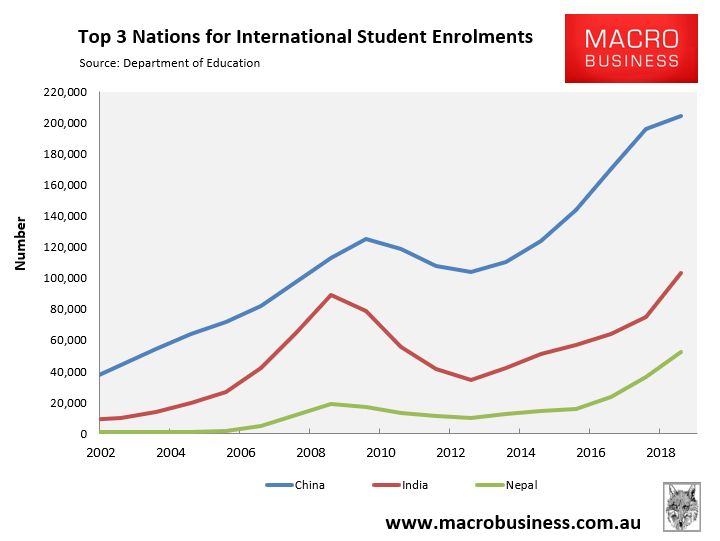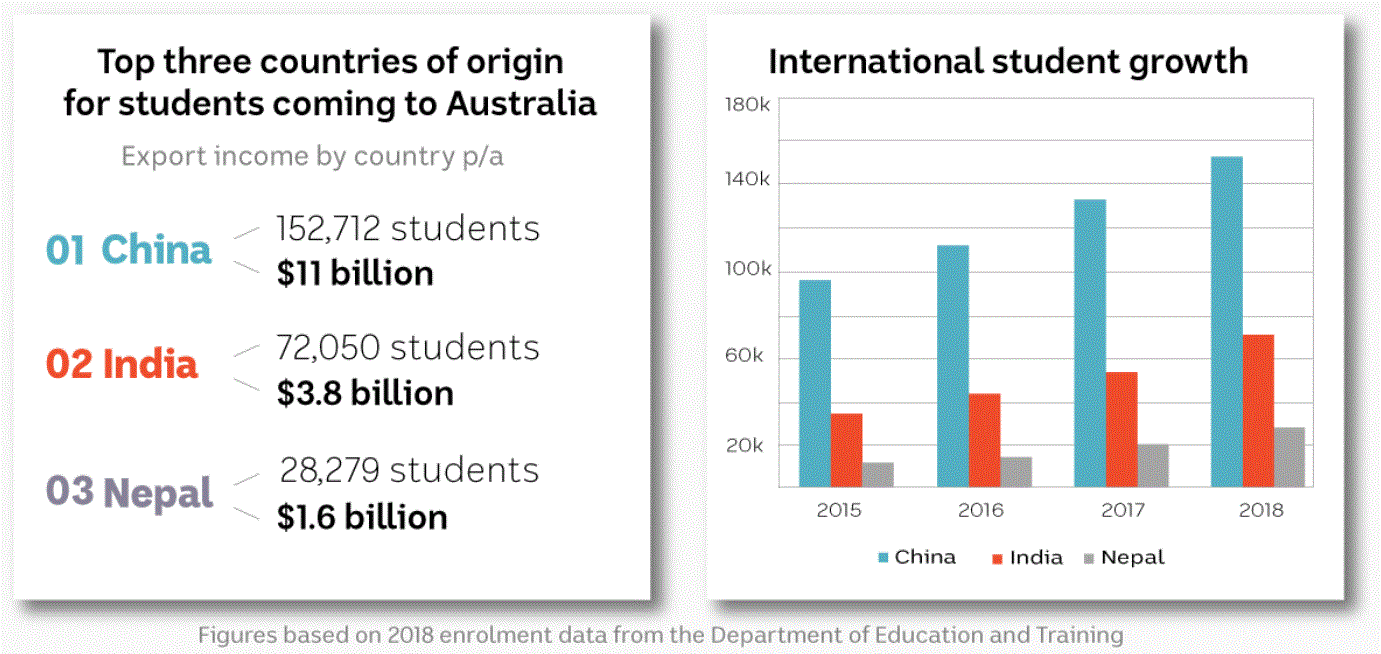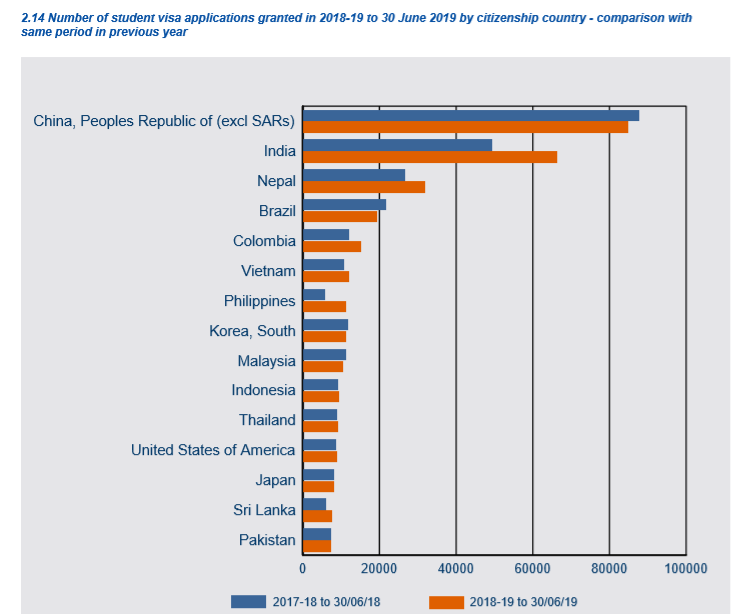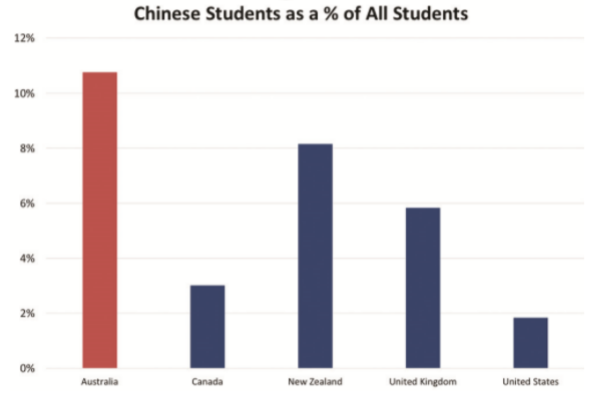For the past six years, Australia’s unprecedented boom in international students has been driven by China, where student enrolments surged by 100,000 (96%) to 204,200 as at June 2019:

Chinese international students also accounted for 31% of Australia’s $35 billion in education ‘exports’ in 2018, dwarfing the second and third biggest source nations – India and Nepal:

The cash cow is now starting to run dry, however, with Chinese student visa applications – a leading indicator for enrolments – suffering a 3.3% decline in the 2018-19 Financial year, according to the Department of Home Affairs:

The softening in Chinese student numbers is already beginning to have a deleterious impact on Australia’s university sector, with Macquarie University reporting a “significantly worse” budget position:
As enrolments from China drop at institutions across NSW and the number of graduating year 12 students stagnates, the university warned it would face a “significantly worse” budget position than expected unless it took action.
“The external circumstances in which we operate have changed significantly,” Vice-Chancellor Bruce Dowton said in a letter to staff. “Enrolment growth domestically and internationally has slowed significantly at a time when our base operating costs continue to rise.
“Current projections are that there will be zero growth in load [fulltime student numbers] in 2020″…
Macquarie is less exposed to the Chinese market than bigger universities, but a senior executive at another institution told the Herald middle-tier universities would likely be the first to feel pressure as the market softens.
That softening is under way; figures released in August show the number of Chinese students beginning to study at NSW universities identified a drop of 3.4 per cent or 866 students year on year.
Another concern was an 11 per cent drop in the number of Chinese students arriving for preparatory programs, which act as a pipeline for university commencements.
The bursting of the Chinese student bubble was always inevitable given Australia has the highest concentration of Chinese international students in the world, as illustrated by Professor Salvatore Babones from the Centre for Independent Studies (CIS):

The same CIS paper also warned that Australia’s universities have become overly reliant on international student fees, which accounted for around one quarter of university revenue in 2017:
…between 2012 and 2017, roughly two-thirds of Australian universities’ increase in total revenue was “driven by increased international student fees,” according to the Australian Department of Higher Education and Training (DET), with the remaining growth due to increases in Commonwealth financial assistance. In 2017, international student fee revenue accounted for 23.3% of the higher education sector’s total revenue, up from just 16.3% in 2013 when international students were already a prominent presence on Australian campuses…
While the upcoming decline in Chinese international students will be painful for Australia’s universities, it is necessary to return their enrolment profiles to a more balanced and sustainable footing.

